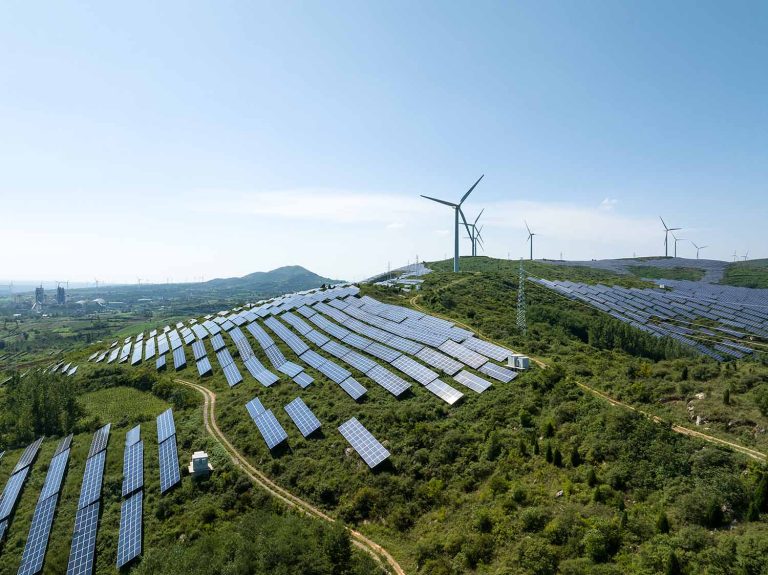ACT’s Bold Move to 100% Renewables Proves Smartest Policy
The ACT government is reaping the benefits of its early and ambitious commitment to achieving 100 per cent renewable energy, a decision that is proving to be exceptionally wise as it protects residents from the impacts of rising fossil fuel-based electricity prices.
Recent quarterly data evaluating the costs associated with the ACT’s pledge to meet its annual energy demand through wind and solar sources—achieved on schedule in 2020—indicates that the additional expense for this policy in the latest quarter was a mere £3 per megawatt hour.
Financial Gains from Wind Farms
Notably, three wind farms contracted by the ACT government have returned substantial sums to the territory, totalling £4.4 million, due to their contract prices being significantly lower than current wholesale electricity rates. The Goyder South project in South Australia, for instance, provided an impressive average return of £50/MWh to the ACT during the June quarter, stemming from a long-term agreement with Neoen to supply electricity at just £44.97/MWh for 20 years.
The Goyder South wind farm, which allocates 100 MW of its capacity to the ACT, contributed £2.9 million in the June quarter, even after the relevant large-scale generation certificates (LGCs) were extinguished instead of being cashed in.
Other Wind Farm Contributions
The Berrybank wind farm in Victoria, with a contract price of £54/MWh, returned £482,000 to the ACT in the same quarter, while the Sapphire wind farm in northern New South Wales, contracted at £89/MWh, still managed to contribute £1 million to the ACT.
The ACT government implemented “contracts for difference” for each of these projects, meaning that if the average wholesale electricity price exceeds the contract price, the surplus is returned to the ACT. Conversely, if the average price falls below the contract price, the ACT compensates the difference.
Interestingly, the decision to extinguish the LGCs associated with the wind and solar contracts was made to ensure that the ACT’s efforts were “additional” to the federal renewable energy target, rather than allowing it to serve as an excuse for others to reduce their commitments.
Supporting the Renewables Industry
The ACT’s initiatives have been crucial in sustaining the renewables sector in Australia, particularly during a time when the Abbott government was actively undermining wind and solar projects, even threatening to abolish the renewable energy target before ultimately agreeing to a reduced version.
This scheme was designed to mitigate price volatility, a common concern during the transition to renewable energy. There were moments when the wisdom of this approach was questioned, especially considering that initial solar projects, established over a decade ago, were locked into 20-year contracts at exorbitant rates of up to £195/MWh, albeit for smaller capacity projects.
However, as time has passed, the scheme has proven to be a success. The majority of the contracted energy now comes from wind farms, with contract prices steadily decreasing to the remarkably low rates achieved for Goyder South and Berrybank.
Current Challenges in the Renewable Sector
Such low prices are now a rarity. Rising civil construction costs and supply chain issues, exacerbated by the Russian invasion of Ukraine and the ensuing fossil fuel crisis, have caused wind power costs in Australia to double. At a recent wind conference in Melbourne, developers acknowledged that they now require a power purchase agreement of around £110/MWh to remain viable. The highest price for wind energy contracted by the ACT was £92/MWh for the initial phase of the Hornsdale project.
It is ironic that the nation’s capital has been the backdrop for contentious debates regarding the pace and necessity of Australia’s green energy transition for nearly two decades. Yet, within the ACT, the local government has forged ahead with its ambitious policy, targeting 100 per cent renewables by 2020 while the rest of the country aimed for a mere 20 per cent share.
David Osmond, an engineer at Windlab who closely monitors the ACT scheme and the overall performance of renewables, reports that the cost of the ACT’s 100 per cent renewable target has dropped to just £3/MWh in the June quarter of 2025. He notes on LinkedIn that the costs of these contracts for difference fluctuate quarterly.
“The cost is negatively correlated to the spot price of electricity, providing a valuable hedge to ACT consumers and shielding them from volatile electricity prices,” he explains, adding that the overall cost of the scheme since its inception has been just £24/MWh.
Future Prospects for Renewable Energy
Other governments may now wish they had acted with similar urgency. Many projects that were once poised to commence have faced delays due to planning issues and policy uncertainty, now confronting significantly higher construction costs for both turbines and civil works.
While the costs of technologies like battery storage and solar PV have decreased, their combination into hybrid projects is becoming an attractive option for corporate buyers who previously focused solely on wind. It raises the question of whether the ACT would have pursued a different technology mix had it been forced to start anew.
Insights may emerge from the tenders being conducted by the federal government under its Capacity Investment Scheme, which offers a similar model but incorporates a price range rather than a fixed figure. The results from the second round of this tender process are anticipated soon, revealing the winners of an additional 6 gigawatts of capacity. Unlike the ACT, the prices will remain undisclosed, but it will be intriguing to see the balance of wind, solar, and hybrid projects in this and future tenders.






